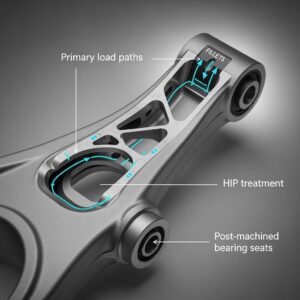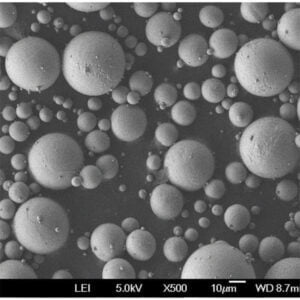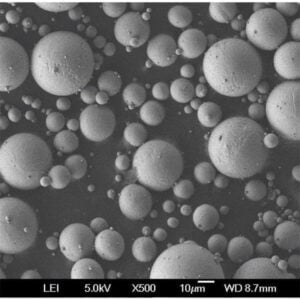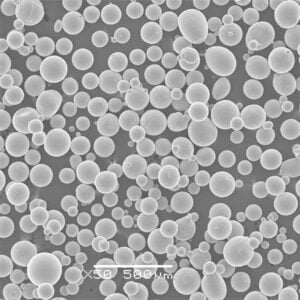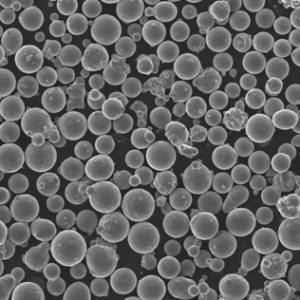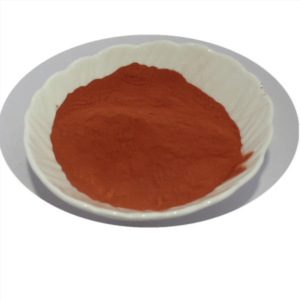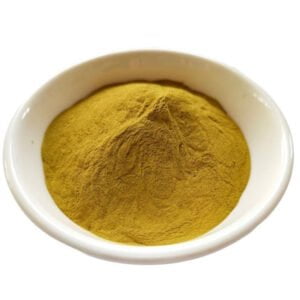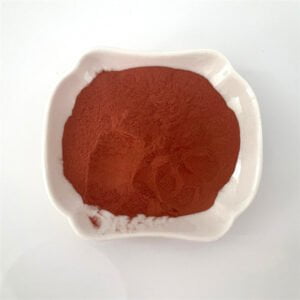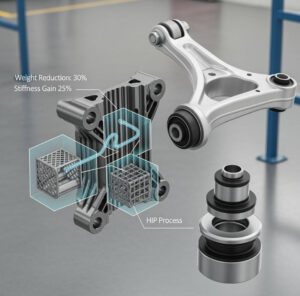モリブデン金属の驚異
目次
現代の世界を支えている元素といえば、鉄、アルミニウム、銅が思い浮かぶだろう。しかし、材料科学の世界にはもう一人、知られざるヒーローがいる: モリブデン.この万能金属は、そのユニークな性質と幅広い用途のために、様々な産業において極めて重要である。モリブデンの世界に深く飛び込み、その不思議を探ってみよう。
モリブデンの概要
モリブデン(Mo)は銀白色の金属で、強度、高融点、耐食性で知られている。地殻中で54番目に多く存在する元素で、主にモリブデン鉱(MoS2)という鉱物から得られる。その顕著な特性により、航空宇宙や軍事から電子機器や医療に至るまで、多くの分野で不可欠なものとなっている。
モリブデンの主要特性
- 高融点:モリブデンの融点は2,623℃で、元素の中で最も高い融点のひとつである。
- 強度と硬度:高温でも強度を保ち、優れた硬度を持つ。
- 耐食性:モリブデンは耐食性に優れ、特に酸に強い。
- 熱伝導率と電気伝導率:熱伝導性、電気伝導性に優れている。
- 合金化能力:モリブデンは、鋼や他の合金の特性を向上させるために一般的に使用される。
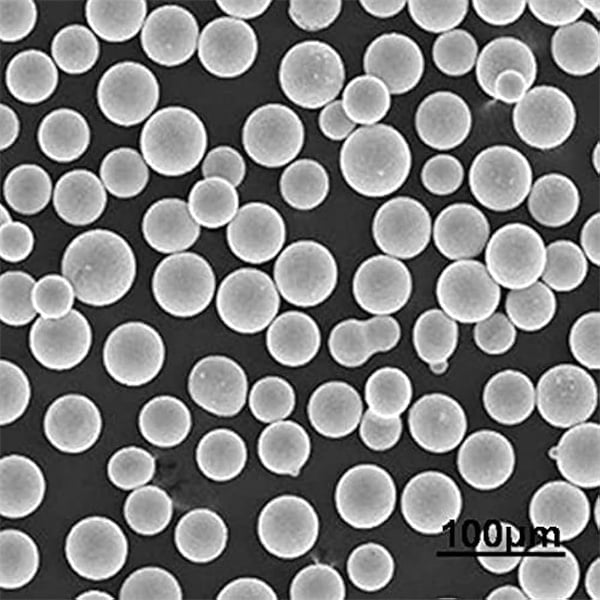
の種類と特性 モリブデン 粉類
粉末状のモリブデンにはいくつかの種類があり、それぞれにユニークな特性と用途がある。市場で入手可能な最も人気のあるモリブデン粉末モデルのいくつかを詳しく見てみましょう。
| パウダーモデル | 構成 | プロパティ | アプリケーション |
|---|---|---|---|
| モ100 | 99.9% モリブデン | 高純度、優れた熱伝導性、耐食性 | エレクトロニクス、航空宇宙、コーティング |
| モ200 | 99.5% モリブデン | 強度と延性のバランスが良く、融点が高い。 | 工業用途、合金化 |
| モ300 | モリブデン-タングステン合金 | 強度と硬度の向上、耐摩耗性の向上 | 切削工具、高温部品 |
| モ400 | モリブデン・レニウム合金 | 優れた機械的特性、優れた耐熱衝撃性 | ロケットノズル、熱電対 |
| モ500 | モリブデン-ランタン合金 | 高い再結晶温度、耐クリープ性の向上 | 炉部品、構造部品 |
| モ600 | モリブデン銅合金 | 優れた熱伝導性と電気伝導性、良好な加工性 | ヒートシンク、電子パッケージ |
| モ700 | モリブデン-ニッケル合金 | 耐食性の向上、優れた機械的特性 | 化学処理、海洋環境 |
| モ800 | モリブデンチタン合金 | 高い強度対重量比、優れた耐食性 | 航空宇宙、自動車 |
| モ900 | モリブデン-シリコン合金 | 高い耐酸化性、優れた熱安定性 | 高温アプリケーション |
| モ1000 | 超微粒子モリブデンパウダー | 極めて微細な粒子径、高い表面積、反応性 | 触媒、積層造形 |
モリブデンの用途
モリブデンのユニークな特性は、幅広い用途に適しています。ここでは、この金属がどのような用途に使われているかを詳しく見てみよう。
| 産業 | アプリケーション |
|---|---|
| 航空宇宙 | ジェットエンジン、ミサイル部品、高温構造部品 |
| エレクトロニクス | 半導体、回路基板、薄膜トランジスタ |
| エネルギー | 原子炉、発電、石油・ガス掘削装置 |
| メディカル | X線管、放射線遮蔽、手術器具 |
| 自動車 | エンジン部品、排気システム、ターボチャージャー |
| 工事 | 構造用鋼、パイプライン、橋梁部品 |
| ケミカル | 触媒、化学処理装置、耐食容器 |
| ディフェンス | 装甲板、薬莢、軍用車両 |
| 製造業 | 切削工具、金型、炉部品 |
| 電気通信 | 導波管、マイクロ波デバイス、衛星通信 |
モリブデンの仕様と規格
特定の用途にモリブデン製品を選択する場合、その仕様と規格を理解することが不可欠です。モリブデン製品の代表的なサイズ、グレード、規格を表にまとめました。
| 製品 | サイズ | グレード | 規格 |
|---|---|---|---|
| モリブデン棒 | 直径1mm~150mm | Mo-1、Mo-2、TZM、Mo-La | ASMB387、ASMF289、ISO3878 |
| モリブデンシート | 厚さ0.1mm~50mm | Mo-1、Mo-2、TZM、Mo-Re | ASMB386、ASMF289、ISO7452 |
| モリブデンワイヤー | 直径0.05mm~3mm | Mo-1、Mo-2、TZM | アストムF289、ISO8951 |
| モリブデン管 | 直径1mm~100mm | Mo-1、Mo-2、TZM、Mo-La | ASMB387、ASMF289、ISO3778 |
| モリブデン・ディスク | 直径10mm~500mm | Mo-1、Mo-2、TZM、Mo-Re | ASMB386、ASMF289、ISO7452 |
| モリブデン箔 | 厚さ0.01mm~0.1mm | Mo-1、Mo-2、TZM | ASMB386、ASMF289、ISO7452 |
| モリブデン・ターゲット | カスタムサイズ | Mo-1、Mo-2、TZM、Mo-Re | ASTM F289、ISO 7452 |
| モリブデン合金 | 様々な | Mo-W、Mo-Re、Mo-La、TZM | ASMB386、ASMF289、ISO7452 |
| モリブデンパウダー | 用途によって異なる | 純Mo、Mo-W、Mo-Re | ASMB387、ASMF289、ISO3778 |
サプライヤーと価格 モリブデン
モリブデンに依存する産業にとって、信頼できるサプライヤーを見つけ、価格体系を理解することは極めて重要である。ここでは、いくつかのトップサプライヤーと、さまざまなモリブデン製品の平均価格についてご紹介します。
| サプライヤー | 製品紹介 | 価格(米ドル) |
|---|---|---|
| プランゼー | ロッド、シート、ワイヤー、フォイル、パウダー | $50〜$300/kg |
| H.C.スタルク | ロッド、シート、パウダー、合金 | 1kgあたり$60~$320 |
| モリメット | 粉末、棒、シート、合金 | $55〜$310/kg |
| 中西部タングステン | ロッド、シート、ワイヤー、パウダー | $45〜$280/kg |
| エルメット・テクノロジーズ | 棒、シート、ワイヤー、箔、合金 | $52〜$290/kg |
| グローバル・タングステン&パウダー社 | 粉末、棒、シート、ワイヤー | $50〜$300/kg |
| 先端材料 | 粉末、ロッド、シート、箔 | $48〜$305/kg |
| モリワークスマテリアル | 粉末、ロッド、シート | $53〜$295/kg |
| エッジテック産業 | ロッド、シート、ワイヤー、パウダー | $47〜$275/kg |
| カート・J・レスカー・カンパニー | 棒、シート、箔、合金 | $49〜$285/kg |
モリブデンの長所と短所
どんな素材にも長所と短所があり、モリブデンも例外ではありません。ここでは、モリブデンを使うメリットとデメリットを比較してみよう。
| メリット | デメリット |
|---|---|
| 高融点:高温用途に適している | コスト:モリブデンは代替品よりも高価な場合がある |
| 耐食性:過酷な環境に最適 | 脆さ:低温では脆くなることがある |
| 強度と硬度:構造部品に最適 | 加工性:柔らかい金属に比べて加工が難しい |
| 熱伝導率および電気伝導率:電子機器に有用 | 空室状況:モリブデンは、鋼やアルミニウムのような一般的な金属よりも産出量が少なく、そのユニークな特性は、その特性が不可欠な特定の用途において、他とは一線を画しています。 |
モリブデン製品の比較分析
モリブデンが他の素材と比較してどのように優れているかをよりよく理解するために、主要なパラメーターについてスチールやアルミニウムと比較してみよう。
強度と耐久性
モリブデンは卓越した強度と耐久性を示し、特に高温での耐久性に優れているため、航空宇宙や防衛などの重要な用途に適しています。対照的に、鋼鉄はその強さで有名ですが、モリブデンに比べて極端な熱条件下では性能が劣る場合があります。一方、アルミニウムは軽量であるが、モリブデンほどの強度と高温性能はない。
耐食性
モリブデンは耐食性に優れているため、酸や過酷な化学薬品にさらされる環境では非常に重宝されます。鋼鉄は、同様の耐食性を達成するために追加のコーティングや処理を必要とし、全体的なコストと複雑さを追加します。アルミニウムは中程度の耐食性を持つが、腐食性の強い環境では保護措置なしでは不十分な場合がある。
熱伝導率と電気伝導率
モリブデンは優れた熱伝導性と電気伝導性を示しますが、アルミニウムに見られる高い伝導性レベルには及びません。しかし、多くの用途、特に高い強度と耐久性を必要とする用途では、モリブデンの導電性で十分な場合が多い。導電性が低いことで知られる鋼は、主に導電性よりも機械的特性のために選ばれます。
コストと入手可能性
モリブデン は、その特殊な特性と、より広く使用されている金属と比較して入手可能なものが限られているため、一般的に鋼やアルミニウムよりも高価です。このコスト要因から、そのユニークな特性が投資を正当化する高価値の用途で使用されることが多い。スチールやアルミニウムは、より豊富で汎用性が高いため、一般的に汎用用途ではコスト効率が高くなります。
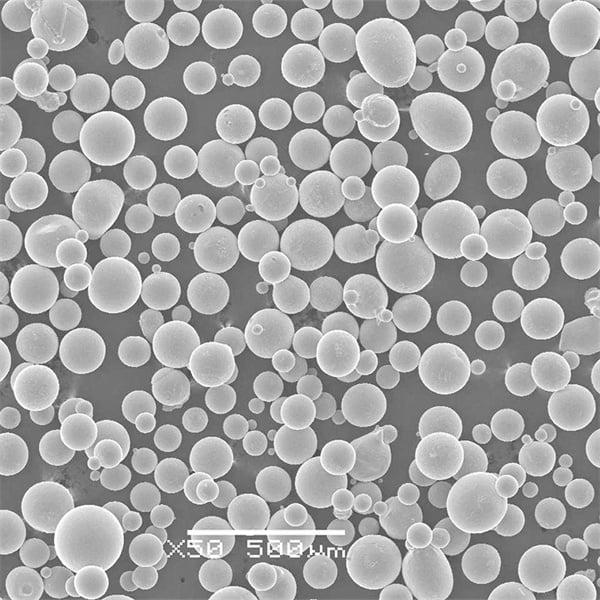
よくあるご質問
モリブデンの主な用途は?
モリブデンは、その高温強度から航空宇宙分野で、その導電性からエレクトロニクス分野で、その耐食性から化学処理分野で幅広く使用されている。また、医療機器、自動車部品、建築材料にも欠かせない。
モリブデンは環境に優しいのか?
モリブデン自体は不活性であり、大きな環境リスクをもたらすことはない。しかし、他の金属と同様、その抽出と加工は環境に影響を与える可能性があり、責任ある採掘慣行とリサイクル・イニシアチブを通じて管理されている。
モリブデンはタングステンと比べて用途はどうですか?
モリブデンとタングステンはどちらも高融点で優れた強度を持つ耐火性金属である。モリブデンは密度が低く機械加工性に優れるため、電子機器や高温用途でより一般的に使用されるのに対し、タングステンは最高の融点と硬度を必要とする用途で好まれます。
モリブデン加工の課題は何ですか?
モリブデンは硬度が高く、機械加工中に加工硬化しやすいため、最適な結果を得るためには特殊な工具と技術が必要となります。適切な冷却と潤滑は、オーバーヒートと工具の摩耗を避けるために非常に重要です。
結論
結論として、モリブデンは材料科学の創意工夫の証であり、それに匹敵する金属はほとんどない強度、耐久性、汎用性の融合を提供する。鉄鋼合金の性能向上から、電子機器や航空宇宙分野での進歩まで、モリブデンが及ぼす影響はさまざまな産業に及んでいる。モリブデンは、そのコストと機械加工の難しさが考慮されるかもしれませんが、重要な用途でモリブデンを使用する利点は、これらの懸念をはるかに上回ります。
モリブデンは、航空宇宙イノベーションにおける用途の探求、化学処理における耐腐食性のソリューションの追求、電子伝導性の限界への挑戦など、その用途を問わず、未来に向けて選択すべき金属としての価値を証明し続けています。
モリブデンを選択する際には、アプリケーションの特定の要件を考慮し、最適な性能と長寿命を達成するためにそのユニークな特性を活用することを忘れないでください。
よくある質問(FAQ)
1) Why is molybdenum called “The Marvel of Metals” in advanced engineering?
- Its combination of ultra-high melting point, excellent high-temperature strength, corrosion resistance (especially to acids), and alloying efficiency makes small additions transformative in steels, superalloys, and electronics.
2) What are the most common industrial forms of molybdenum for high-value applications?
- Pure Mo (Mo-1/Mo-2), TZM (Ti-Zr-Mo) for creep strength, Mo-Re for thermal shock, and Cu-Mo laminates for thermal management. In powder form, ultra-fine Mo is used in catalysts and additive manufacturing.
3) How does molybdenum improve stainless and low-alloy steels?
- Mo increases pitting and crevice corrosion resistance (notably in chloride environments), enhances high-temperature strength, and improves hardenability. Grades like 316/317 stainless rely on Mo for superior corrosion performance.
4) Is molybdenum suitable for additive manufacturing (AM)?
- Yes. Gas-atomized Mo and Mo-based alloys (e.g., Mo-Re, Mo-Cu) are used in PBF and DED for heat sinks, high-temperature tooling, and electronics. Powder requirements include high sphericity, narrow PSD (often 15–45 µm), and very low oxygen.
5) What are best practices for machining and joining molybdenum?
- Use sharp carbide tools, low speeds, ample coolant, and avoid work-hardening. For joining, electron beam or TIG with controlled atmospheres is preferred; Mo-copper brazes are common for thermal assemblies.
2025 Industry Trends
- Energy transition demand: Hydrodesulfurization and hydrogen-related catalysts sustain Mo demand; high-Mo stainless use grows in desalination and chemical processing.
- Electronics thermal management: Mo-Cu and Mo laminates gain traction as copper alternatives where CTE matching and high-temperature stability are critical.
- AM adoption: More suppliers offer spherical Mo and Mo-Re powders with documented interstitial control for aerospace and semiconductor tooling.
- Sustainability: Producers publish Environmental Product Declarations (EPDs); recycling rates of Mo from catalysts and alloy scrap continue to rise.
- Supply diversification: Expansion of roasting/conversion capacity outside traditional hubs improves supply resilience.
2025 Snapshot: Molybdenum: The Marvel of Metals
| Metric (2025e) | Typical Value/Range | Notes/Source |
|---|---|---|
| Global Mo demand | 640–690 kt Mo | Mining/analyst compilations |
| Primary use in steels | ~70–75% of Mo units | Stainless, alloy steels |
| AM-grade Mo powder PSD | D10 15–20 µm; D50 25–35 µm; D90 40–50 µm | PBF-oriented cuts |
| Thermal conductivity (pure Mo) | ~138 W/m·K | Room temperature |
| CTE (pure Mo) | ~4.8–5.1 µm/m·K | 20–100°C |
| 融点 | 2623℃ | Refractory class |
| Recycling contribution | 25–35% of supply | Scrap + catalysts |
Authoritative sources:
- ASTM/ISO materials specs for Mo and alloys: https://www.astm.org, https://www.iso.org
- International Molybdenum Association (IMOA): https://www.imoa.info
- MPIF and ASM Handbooks for powder metallurgy and refractory metals: https://www.mpif.org, https://www.asminternational.org
Latest Research Cases
Case Study 1: Mo-Re Additive Manufacturing for Thermal Shock Resistance (2025)
- Background: A space propulsion supplier needed nozzles with superior thermal shock tolerance beyond TZM capabilities.
- Solution: Qualified gas-atomized Mo-47Re powder (15–45 µm), optimized LPBF parameters with elevated preheat and post-build HIP; implemented oxygen control <0.05 wt% from storage to build.
- Results: Thermal shock cycles to failure improved by ~30% versus wrought TZM baseline; density ≥99.9% after HIP; machining allowance reduced 12% due to dimensional stability.
Case Study 2: Cu-Mo Heat Spreaders with CTE Matching for Power Electronics (2024/2025)
- Background: An EV inverter program faced solder fatigue from CTE mismatch using copper heat spreaders.
- Solution: Adopted diffusion-bonded Cu-Mo laminates; tuned Mo fraction to match SiC device CTE; integrated vacuum brazing using Ag-Cu-Ti active braze.
- Results: Junction temperature ripple −8–10°C; thermal cycling life +40%; module mass −12% with no loss in thermal performance.
専門家の意見
- Dr. David E. Laughlin, Professor Emeritus of Materials Science, Carnegie Mellon University
- Viewpoint: “Molybdenum’s role as a potent microalloying element remains pivotal—small additions deliver disproportionate gains in creep and corrosion performance.”
- Dr. Thomas Ebel, Head of Powder Metallurgy, Helmholtz-Zentrum Hereon
- Viewpoint: “For AM, interstitial control and powder morphology are decisive with molybdenum; oxygen and surface oxides must be minimized to achieve near-wrought properties.”
- Dr. Jeffrey T. Smith, Senior Materials Engineer, Power Electronics OEM
- Viewpoint: “Cu-Mo architectures are increasingly the thermal interface of choice where CTE matching, high-temperature stability, and reliability trump raw conductivity.”
Practical Tools/Resources
- IMOA technical literature on Mo in steels and corrosion: https://www.imoa.info
- ASTM standards: B386/B387 (wrought Mo/TZM), B387 grades, F289 (wire), alloy-specific refs: https://www.astm.org
- ISO standards for refractory metals and powders (e.g., ISO 6841, ISO 4499 contexts): https://www.iso.org
- ASM Handbook: Properties and Selection of Refractory Metals and Alloys: https://www.asminternational.org
- MPIF guides on refractory metal powder processing: https://www.mpif.org
- Design/calculation aids: CES EduPack/Granta MI for Mo property databases; thermophysical data from NIST (https://www.nist.gov)
Implementation tips:
- Specify composition and interstitial limits (O, N, C) and require batch CoA with PSD and morphology for powders used in AM.
- For corrosion service, target PREN improvements in stainless via Mo additions and validate with ASTM G48 testing where relevant.
- In thermal management, balance conductivity with CTE by tailoring Mo content in Cu-Mo; validate interfaces with thermal cycling and shear tests.
- For machining, use rigid setups, sharp tooling, flood coolant, and consider stress relief prior to finish machining.
Last updated: 2025-10-13
Changelog: Added 5-question FAQ, 2025 market/spec snapshot table, two recent application case studies (Mo-Re AM and Cu-Mo heat spreaders), expert viewpoints, and curated standards/resources with implementation tips for “Molybdenum: The Marvel of Metals”
Next review date & triggers: 2026-04-20 or earlier if IMOA/ASTM/ISO standards update, major AM-grade Mo powder specs change, or new data on Cu-Mo thermal management and Mo-Re AM becomes available
シェアする
MET3DP Technology Co., LTDは、中国青島に本社を置く積層造形ソリューションのリーディングプロバイダーです。弊社は3Dプリンティング装置と工業用途の高性能金属粉末を専門としています。
関連記事
